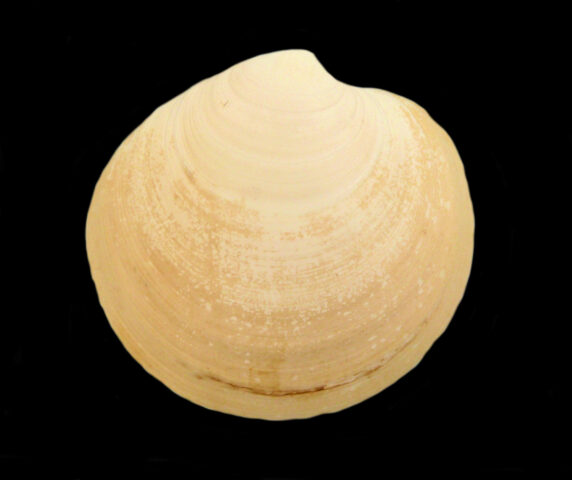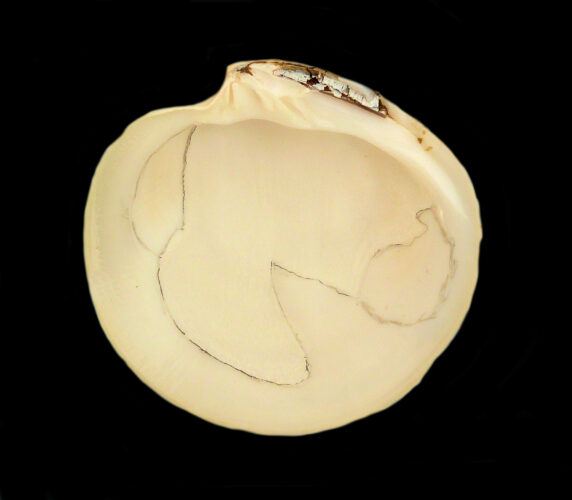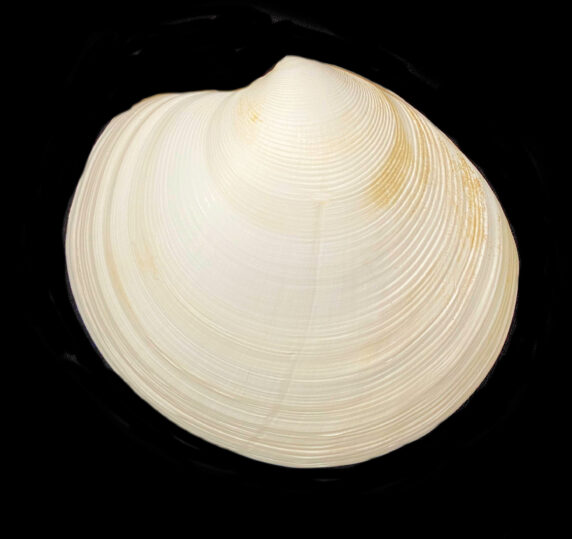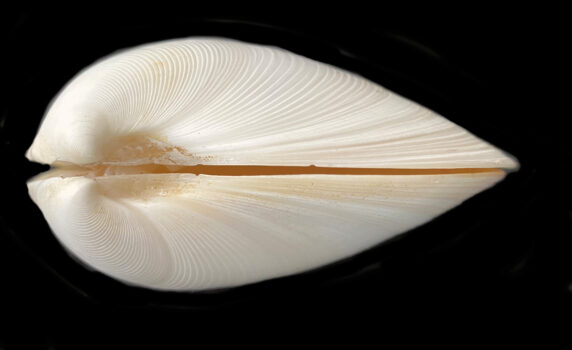Ponderous Dosinia Clam Shell, Dosinia ponderosa

 Ponderous Dosinia Clam Shell, Dosinia ponderosa. Shell collected within the intercoastal water off Puerto Adolfo Lopez Mateos, Baja California Sur, March 2018. Size: 10.0 cm (3.9 inches) x 9.5 cm (3.7 inches).
Ponderous Dosinia Clam Shell, Dosinia ponderosa. Shell collected within the intercoastal water off Puerto Adolfo Lopez Mateos, Baja California Sur, March 2018. Size: 10.0 cm (3.9 inches) x 9.5 cm (3.7 inches).

 Ponderous Dosinia Clam Shell, Dosinia ponderosa. Shell collected off the beach at Punta Chivato, Baja California Sur, February 2022. Size: 11.6 cm (4.6 inches) x 11.2 cm (4.4 inches). Collections, photographs and Identifications courtesy of Colin Campbell, DVM, Punta Chivato, Baja California Sur.
Ponderous Dosinia Clam Shell, Dosinia ponderosa. Shell collected off the beach at Punta Chivato, Baja California Sur, February 2022. Size: 11.6 cm (4.6 inches) x 11.2 cm (4.4 inches). Collections, photographs and Identifications courtesy of Colin Campbell, DVM, Punta Chivato, Baja California Sur.
Ponderous Dosinia Clam, Dosinia ponderosa (Gray, 1838), is a Venus Clam of the Veneridae Family. They are also known as the Heavy Dorsina Clam and in Mexico as almeja mantequilla and dosinia redonda. They have a large thick shell clam that is equivalve (both values are equal in size and shape) with a strong hinge and a round profile. Both valves are only slightly convex, giving the shell a flattened, disk-like look. The exterior of the shell is marked with low concentric ridges, which become smoother as the shell matures. The exterior of the shell is white in color but is usually covered by a yellow periostracum, giving rise to its Spanish name almeja mantequilla or “Butter Clam.” Ponderous Dosinia Clam Shells reach 14.7 cm (5.8 inches) in length and and 14.2 cm (5.6 inches) in height.
The Ponderous Clam reside in shallow burrows within sand and mud substrate at depths up to 60 m (200 feet). They are found from Scammon’s Lagoon, Baja California to Peru and throughout the Sea of Cortez.
Synonyms include Arthemis ponderosa, Cytheria gigantea, Dosinia grandis, Dosinia titan, and Venus cycloides.